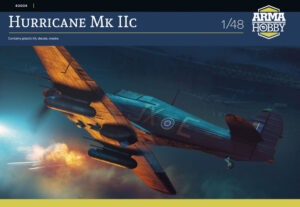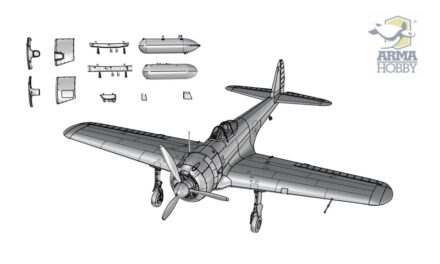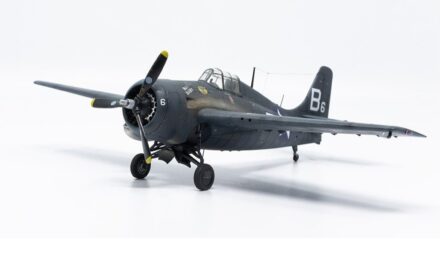The inspiration for this scene was a photo of a caravan of elephants passing a reconnaissance Hurricane somewhere in India during World War II. Next to the huge, metal-wooden-canvas machine, the elephant looks anachronistic. Still, in three millennia of war history and in everyday civilian applications, this tame monster can boast of great merit.
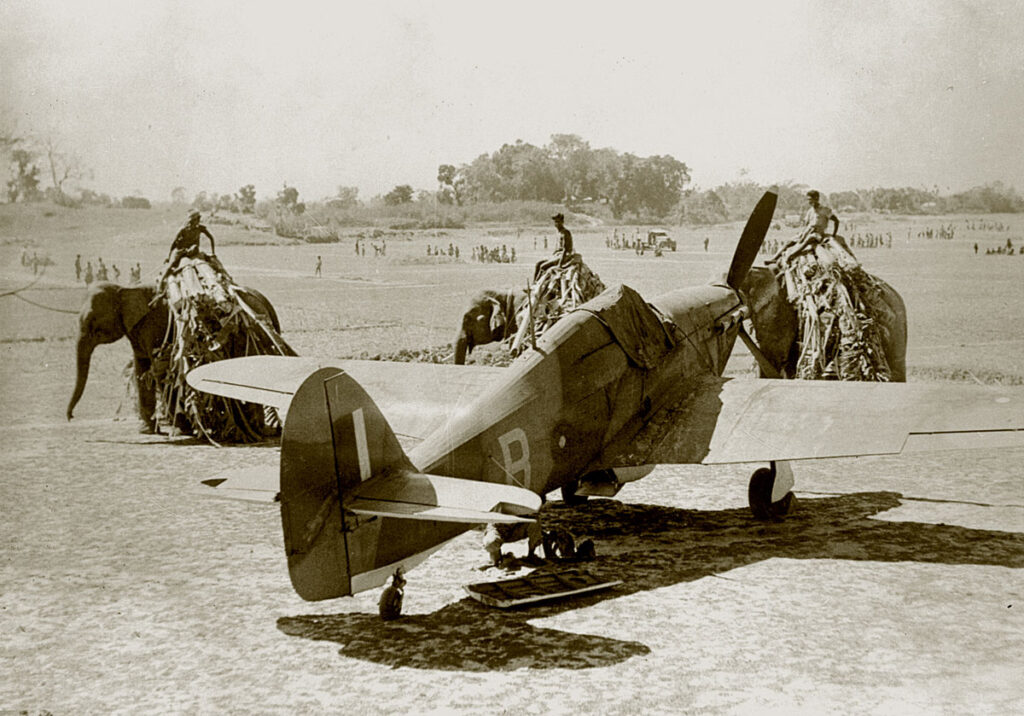
Photo: asisbiz
The diorama shows a scene on the Burmese front. The Hurribomber stands ready to fly in field conditions on bare ground. The elephant transports nature’s gifts, perhaps fuel, perhaps building material. A chance encounter depicting the transformations of the glory of this world.
The Hurricane Mk IIc model was assembled from pre-production sprues, I used decals for the tropical kit and 3D accessories available only during the preorders.
The Figures
Figures come from CMK set “48345 WWII RAF Mechanic in India + Elephant with Mahout”, palm leaves from Model Scene “VG7-034 Palm Leaves – Type I”. The elephant was quite well sculpted, except perhaps for the eyes, it was a pleasure to paint it. The figures were a little poorer, they needed some cleaning, but in the end they were pleasant to paint. There were not enough palm leaves to weigh the elephant, so I added crops from the nearest meadow and Mininatur foliage.


The Ground
The ground was inspired by the photo. I covered it with 100ml A.MIG 2152 LIGHT EARTH GROUND mud, but it was too uneven, so I filled it with white glue mixed with modelling dust. The cracked bottom of a dried puddle is the 40ml A.MIG 2184 QUAKE CRACKLE CREATOR TEXTURES product. I made irregular tufts of grass from Mininatur sets and a brush for painting windows. I added leaves from the same company and some natural sticks and roots and painted with earthy shades of paints and covered with 5763 Polak Pigment powder dry soil 50ml mixed with diluted violet.

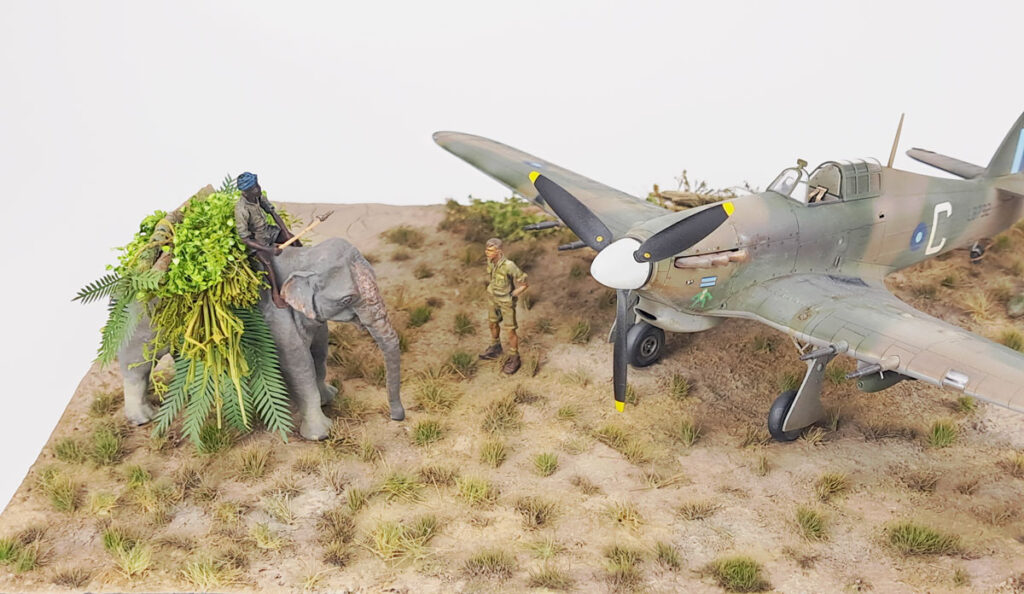
The Aeroplane
I fastened the plane with wire pins and glued it to the ground with white glue with the tail wheel. This allows the aircraft to be removed from the diorama when needed. It’s time for its weathering. I added scratches using watercolour pencils, Gunze C8 silver lacquer, Vallejo Sepia wash and Smoke Tamiya lacquer. I airbrushed it with earthy colours, just like the ground. It muted the other weathering effects, but I thought it did a good job of recreating the dry, dusty climate of the dry season in Burma.

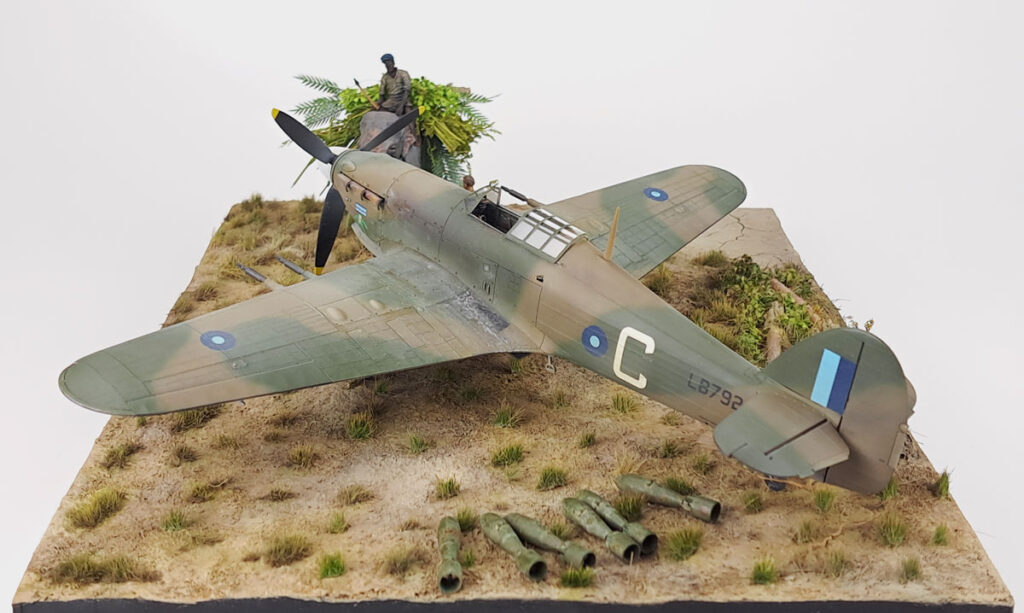
The Bombs
I collected the bombs from colleagues who had not used them in their models. After painting with the base colour, I covered them with a wash in the colour of the base and marked the dust spots with a sponge and various shades of green. I tried to slightly highlight the differences between the body of the bomb and the tail section, which were stored separately in the field. Bombs were secured in “trenches” in the open air, and tails were stored in boxes. After assembly, they should be more or less different in the degree of dirt. Perhaps I did it too lightly.
Making the model and diorama gave me a lot of satisfaction. I’d love to see similar scenes from you! If you have questions, feel free to comment below.
See also:
Modeller happy enough to work in his hobby. Seems to be a quiet Aspie but you were warned. Enjoys talking about modelling, conspiracy theories, Grand Duchy of Lithuania and internet marketing. Co-founder of Arma Hobby. Builds and paints figurines, aeroplane and armour kits, mostly Polish subject and naval aviation.
This post is also available in:
 polski
polski



